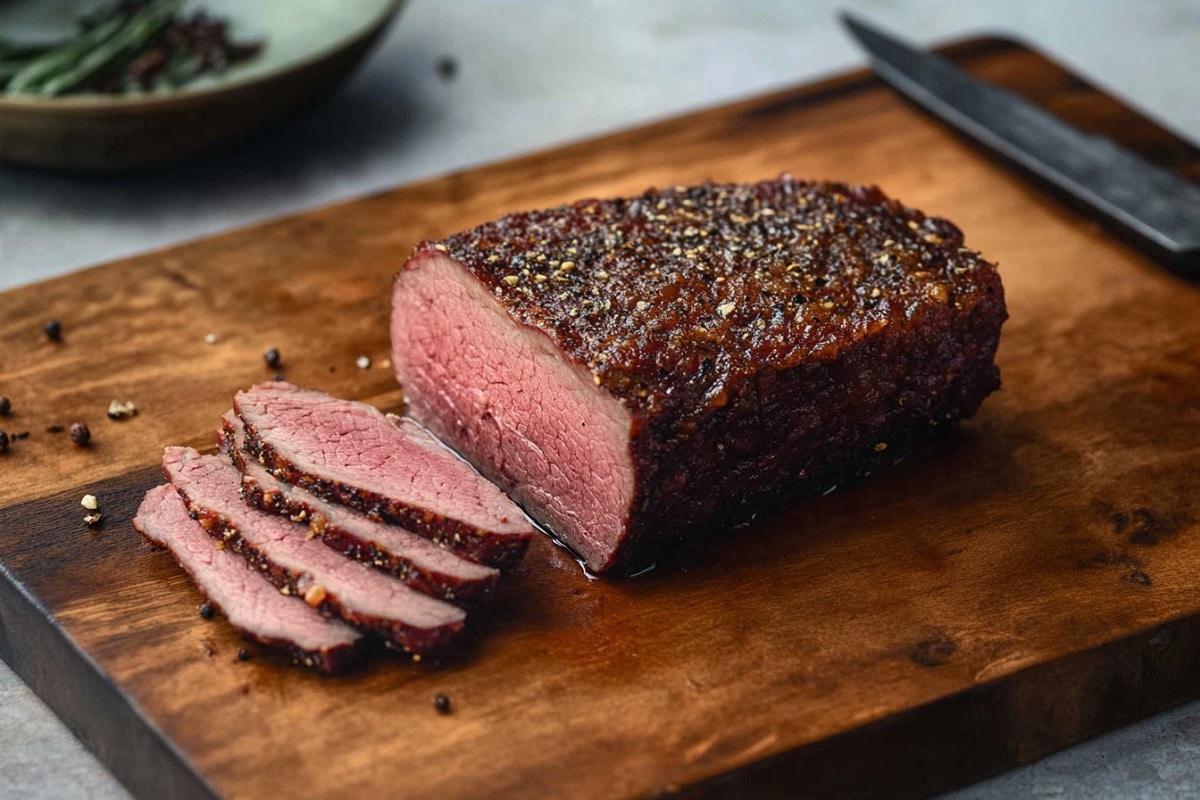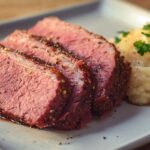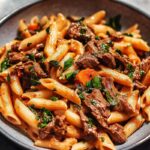I still remember the first time I was asked to cook kosher beef. I thought, “How different can it be from regular beef?” Well, I quickly learned that kosher cooking has its own unique rules, and getting it right is about more than just choosing the right cut of meat.
The first challenge was understanding what makes beef kosher—the shechita process, kashering with salt, and keeping meat and dairy separate. Then came the real test: cooking it the right way, while respecting Jewish dietary laws. After trial and error (and a lot of research), I finally mastered the process.
If you’ve ever wondered how to cook kosher beef, you’re in the right place! Whether you’re cooking for family, guests, or just want to try something new, this guide will walk you through everything you need to know about preparing and cooking kosher beef to perfection.
What you will find in this article:
What is Kosher Beef?
Before you start cooking, it’s essential to understand what makes beef kosher. The rules of kashrut (Jewish dietary laws) dictate which animals can be eaten and how they must be processed.
- Kosher beef must come from a kosher animal—one that has split hooves and chews cud (e.g., cows, sheep, goats).
- The animal must be slaughtered in a kosher way (shechita), a ritual slaughtering process performed by a trained Jewish professional known as a shochet.
- To remove forbidden blood, the meat must go through a salting process (kashering), where it’s coated in kosher salt to draw out blood before being rinsed.
If you’re curious about other kosher meat preparation techniques, check out this article on kosher cooking tips.
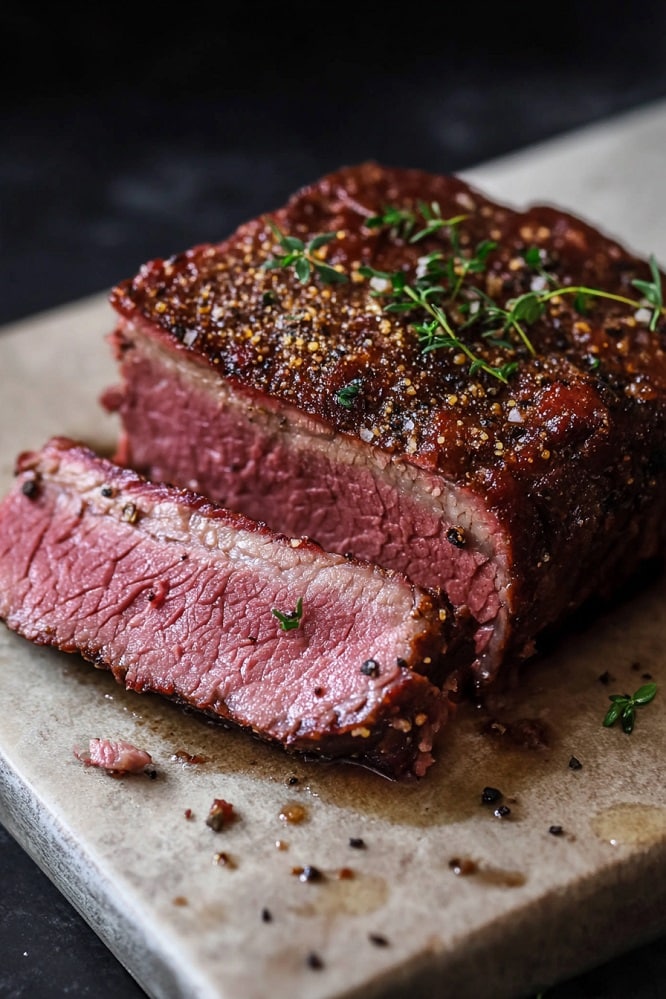
Kosher Beef vs. Regular Beef: What’s the Difference?
Cooking kosher beef is different from preparing non-kosher beef. Here’s why:
- Slaughter Method: Kosher beef must be slaughtered using shechita, which is designed to be humane and to ensure the blood drains properly.
- Blood Removal: Unlike regular beef, kosher beef must be salted and soaked to remove all traces of blood, since consuming blood is forbidden in kashrut.
- Forbidden Parts: Certain fats (chelev) and the sciatic nerve (gid hanasheh) are not allowed in kosher beef and must be removed.
(Psst! If you’re also curious about perfecting another classic beef dish, check out my guide on What is the Secret to the Best Corned Beef?. You’ll love the tips I share there!)
How to Buy Kosher Beef: What You Need to Know
Not all beef labeled “kosher” is the same. Here’s what you need to look for:
Where to Buy Kosher Beef
- Kosher Butcher Shops – These specialize in kosher meat and follow strict guidelines.
- Supermarkets with Kosher Sections – Many large grocery stores have a dedicated kosher section.
- Online Kosher Meat Suppliers – You can order kosher beef from trusted sources online.
How to Identify Kosher Beef
- Look for a kosher certification symbol (hechsher) from organizations like OU (Orthodox Union), Star-K, OK, or CRC.
- Ensure the packaging clearly states that the meat has been properly kashered (pre-salted).
Buying from a trusted kosher source ensures that your beef meets all Jewish dietary laws and that you’re starting with high-quality meat.
Preparing Kosher Beef: Essential Steps
Since kosher beef has already been salted, you need to adjust your preparation method accordingly.
✔ Rinsing: Some people prefer to rinse the meat before cooking to remove excess salt, but this is optional.
✔ Marinating: Because kosher beef has undergone a salting process, using acidic marinades (like lemon juice or vinegar) can help balance the flavor.
✔ Avoiding Dairy: Remember, kosher cooking forbids mixing meat and dairy—no butter or cream-based marinades!
How to Cook Kosher Beef: Best Methods & Techniques
You can cook kosher beef just like any other beef—as long as you respect kosher laws. Here are the best cooking methods:
1. Braising (Low & Slow Perfection)
- Best for brisket, short ribs, and tougher cuts.
- Cook slowly in broth, wine, or tomato sauce for deep, rich flavors.
- Use olive oil instead of butter to keep it kosher.
2. Grilling (Perfect for Steaks & Burgers)
- Season with kosher salt, garlic, and smoked paprika for extra flavor.
- Grill over medium-high heat for a juicy, charred crust.
- Avoid butter-based sauces—opt for olive oil or a dry rub instead.
3. Roasting (For Prime Rib & Roasts)
- Roast at 325°F for a slow, even cook.
- Use a meat thermometer to avoid overcooking.
- No butter-basting! Use a mix of herbs, garlic, and olive oil.
4. Slow Cooking (Effortless & Flavorful)
- Ideal for stew meat and tougher cuts.
- Let it cook for 8-10 hours on low for fall-apart tenderness.
- Add onions, carrots, and potatoes for a classic Jewish-style dish.
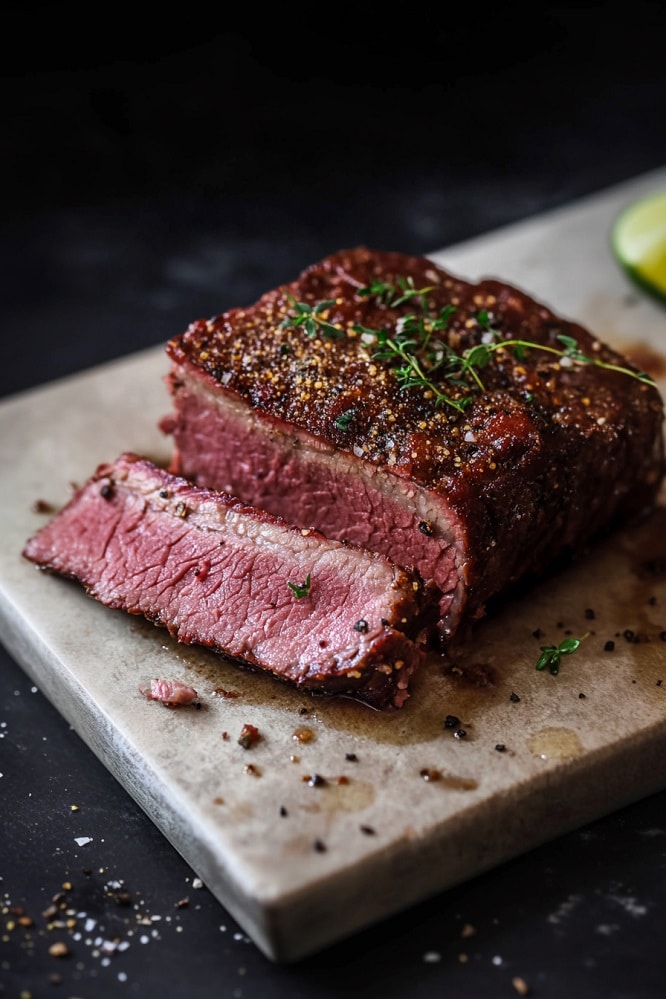
Seasoning Kosher Beef: What You Can & Can’t Use
Since kosher beef is already salted, you need to season it carefully.
✔ Best Kosher-Friendly Seasonings:
- Black pepper
- Garlic powder
- Smoked paprika
- Cumin
- Mustard seeds
🚫 Avoid These Non-Kosher Ingredients:
- Butter-based sauces (use olive oil instead).
- Cheese or dairy-based seasonings (kosher laws prohibit mixing meat and dairy).
- Non-certified sauces or spice blends (always check for kosher certification).
Pairing Kosher Beef with Side Dishes
✔ Kosher-Friendly Sides:
- Roasted vegetables
- Matzo ball soup
- Potato kugel
🚫 Avoid These Dairy-Based Sides:
- Creamed spinach
- Buttered mashed potatoes
FAQs
Do I need to salt kosher beef before cooking?
No, it has already been salted during processing.
Can I cook kosher beef in a non-kosher kitchen?
Only if you use kosher utensils and avoid cross-contamination.
Why does kosher beef taste different?
The kashering process removes blood, which affects flavor and texture.
Conclusion.. My Kosher Beef Cooking Journey
Looking back, my first attempt at kosher cooking was a challenge, but now, I see it as a beautiful tradition that honors Jewish dietary laws.
If you’ve never cooked kosher beef before, don’t be intimidated! With the right cuts, kosher-friendly seasonings, and proper cooking techniques, you can create delicious, flavorful meals that respect tradition.
Have you cooked kosher beef before? Let me know in the comments!

